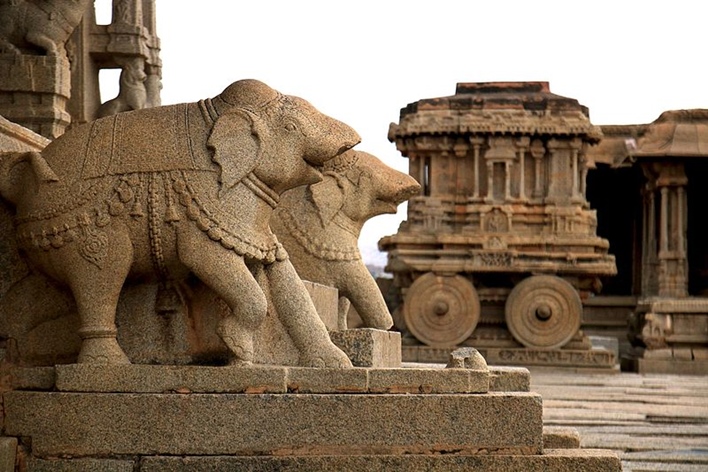Queen’s Bath – A Royal Bathing Complex
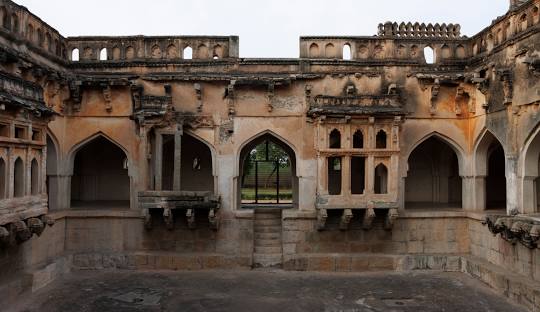
The Queen’s Bath is a royal bathing complex in Hampi, showcasing Indo-Islamic architecture. It features ornate balconies, arched corridors, and a deep sunken bath. Built during the Vijayanagara Empire, this historic structure was designed for the royal women and queens, offering them a private and luxurious bathing space. The exterior appears simple, but the interior boasts intricate detailing, elegant floral motifs, and symmetrical arches that highlight the grandeur of its time.
Surrounded by a moat, the Queen’s Bath was designed with an advanced water supply and drainage system, reflecting the architectural brilliance of the 16th century. The blend of Hindu and Islamic styles seen in its design makes it a significant attraction for history buffs and architecture enthusiasts.
👉 Highlights: Ornate balconies, arched walkways, serene atmosphere.
👉 Location: Near the Royal Enclosure
👉 Best Time to Visit: October – March for pleasant weather
👉 Things to Do: Explore the intricate carvings, learn about the ancient water systems, and take stunning photographs of the serene ambiance.
Kamal Mahal – The Lotus Palace
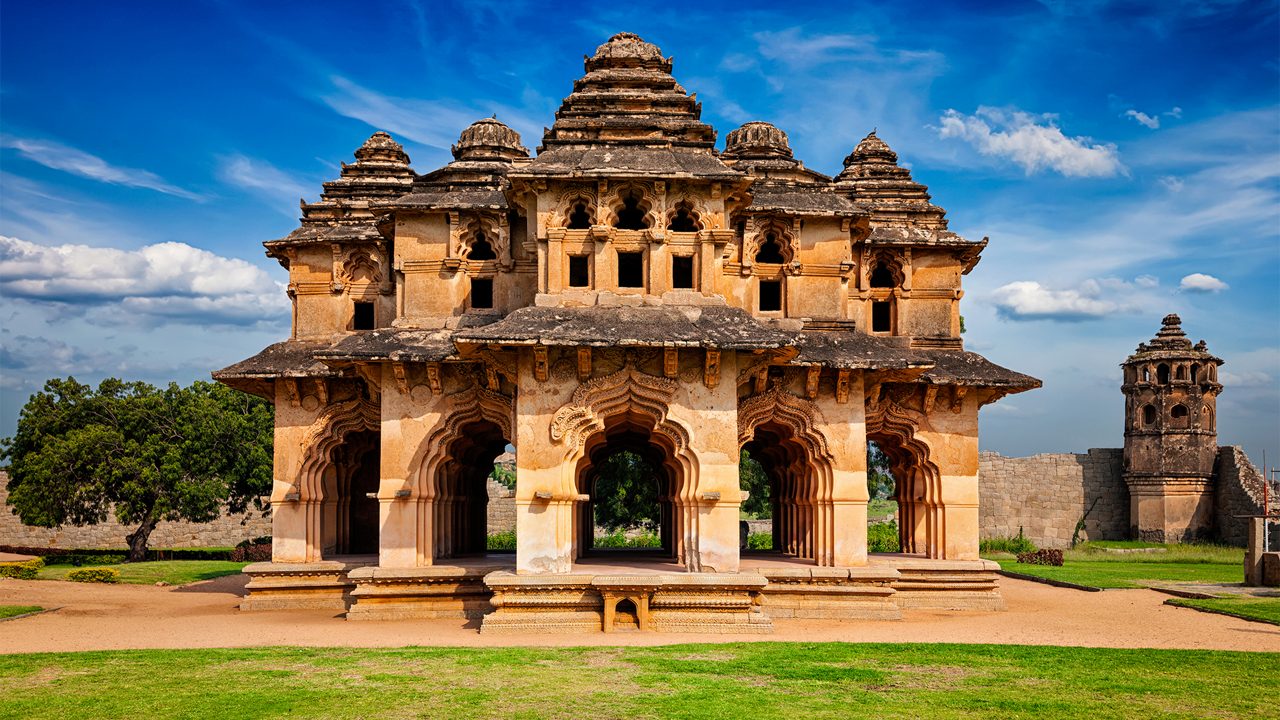
The Kamal Mahal, also known as Lotus Mahal, is a stunning Indo-Islamic structure that served as a royal recreational palace. Nestled within the Zenana Enclosure, this palace was exclusively used by the royal women of the Vijayanagara Empire. Its unique lotus-like design, symmetrical arches, and domed structure make it one of the most iconic landmarks in Hampi.
The Mahal is an exquisite blend of Hindu and Islamic architectural elements, featuring arched windows, ornate balconies, and a cooling system that kept the interiors comfortable even in summer. The palace's design, with its delicate carvings and elegant proportions, showcases the architectural advancements of the Vijayanagara era.
👉 Highlights: Unique lotus-shaped dome, intricate archways, Indo-Islamic fusion architecture.
👉 Location: Zenana Enclosure, near Elephant Stables
👉 Best Time to Visit: October – March for cooler weather
👉 Things to Do: Admire the symmetrical design, explore the Zenana Enclosure, and capture stunning photographs of this architectural wonder.
Stone Chariot – The Icon of Hampi
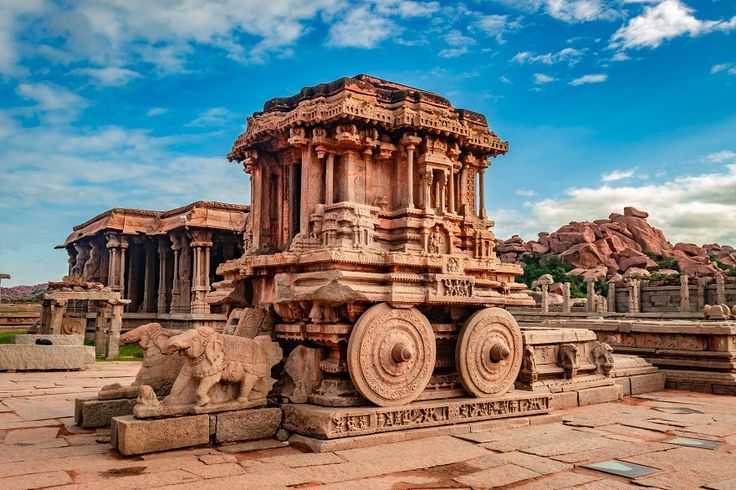
The Stone Chariot at Vijaya Vittala Temple is one of Hampi’s most famous landmarks, dedicated to Garuda, the vehicle of Lord Vishnu. This magnificent structure is a symbol of the Vijayanagara Empire and is often compared to the Sun Temple in Konark due to its chariot-like design.
The Stone Chariot stands as a masterpiece of 16th-century craftsmanship, featuring intricate carvings, mythical sculptures, and an impressive stone-wheeled base. Though the wheels were once designed to rotate, they have been fixed to preserve the monument. The temple complex around it boasts musical pillars that produce sounds when tapped, adding to the mystical experience of this site.
👉 Highlights: Rotating wheels (now fixed), intricate carvings, Garuda shrine.
👉 Location: Vijaya Vittala Temple Complex
👉 Things to Do: Admire the detailed carvings, explore the temple complex, and capture the grandeur of Hampi’s most photographed monument.
Vijaya Vittala Temple – Musical Pillars & Architectural Wonder
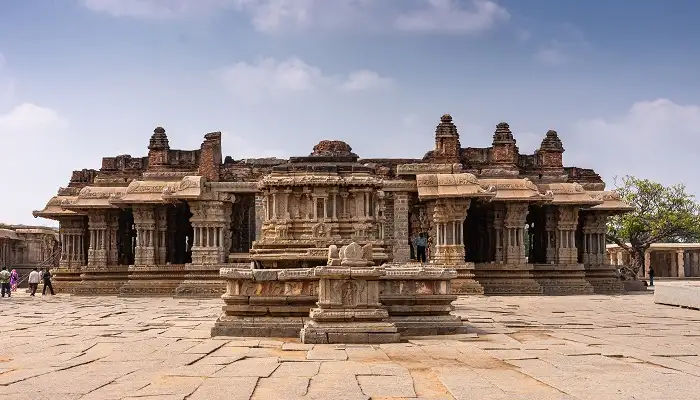
The Vijaya Vittala Temple is the grandest temple in Hampi, famous for its musical pillars and spectacular stone carvings. This 15th-century architectural marvel, built during the reign of the Vijayanagara Empire, is dedicated to Lord Vittala, an incarnation of Lord Vishnu. The temple complex is an exquisite example of Dravidian architecture, featuring intricate sculptures, massive courtyards, and several mandapas (halls) that showcase the artistic excellence of ancient India.
One of the most fascinating features of the Vijaya Vittala Temple is its musical pillars, also known as the SAREGAMA pillars. When gently tapped, these stone pillars produce distinct musical notes, a phenomenon that has amazed historians and architects for centuries. The temple also houses the iconic Stone Chariot, a symbol of Karnataka’s rich heritage, featuring detailed carvings and a chariot-like structure dedicated to Garuda, the celestial vehicle of Lord Vishnu.
👉 Highlights: Musical pillars, intricately carved sculptures, the Stone Chariot, and impressive Dravidian-style architecture.
👉 Location: Near the Tungabhadra River, Hampi
👉 Things to Do: Experience the musical pillars, admire the temple’s intricate stone carvings, and explore the vast temple complex.
How to Reach Hampi?
✈️ By Air
The nearest airport is JSW Vidyanagar Airport (35 km), with limited flights. Other options include Hubli Airport (160 km) and Kempegowda International Airport in Bangalore (350 km), which offer better connectivity.
🚂 By Train
The closest railway station is Hospet Junction (13 km). It has direct trains from Bangalore, Hyderabad, Goa, and other major cities.
🚗 By Road
Hampi is well connected by **state highways**. You can reach it via Hospet (13 km), with KSRTC buses, taxis, and self-drive cars available for a convenient journey.
